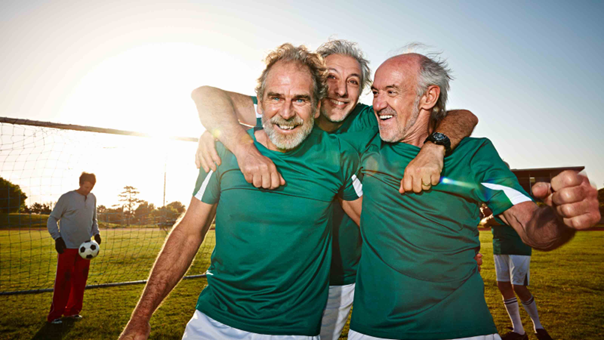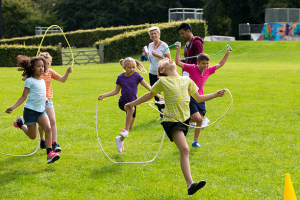
Senior Athletics – Sports in your 50s? As the elderly person’s body no longer responds to the demands of exercise, any doctor would recommend this as a great idea as long as you remain alert and concentrate on risk-free activities.
Sports have many advantages for the elderly:
Muscle mass and strength decrease between 40 and 50 percent after the age of 50, depending on the individual.
Breathing problems worsen with age, weight gain becomes more common, and balance problems worsen. As people get older, their independence deteriorates, and they are more likely to fall. After a certain age, staying idle poses a danger. To combat these negative effects, moderate exercise is an excellent treatment option.
1. Hiking and walking:
Walking and its derivatives are without a doubt the best sports for the elderly. Walking is a fundamental activity that can be done anywhere, and it works well in most situations. It slows down or prevents osteoporosis and works the whole body without harm. Senior hiking, it’s more “sporty” version, is good for cardio, especially above 1,500 meters above sea level. Excellent for seniors of any age, except those with severe heart or respiratory deficiencies or advanced osteoarthritis of the hips and knees.
2. Career options for seniors:
Following 60 years, you could feel that running is excessively extraordinary. According to a sports physiotherapist, running exercises for older people do not cause problems, except for a few exceptional cases. However, contrary to the practice instructions, a beginner in running stands out and requires personal monitoring to control the intensity of your practice and lower your risk of injury. You can run in sneakers under strict medical supervision.
3. Cycling:
Cycling is one of the best sports for older people. beneficial for the heart, blood circulation, breathing, muscle coordination, and balance. However, knee osteoarthritis necessitates extreme caution.
4. Yoga:
Yoga is becoming more and more popular among people of all ages. As a result, there are various forms of yoga for various ages and skill levels. Through a variety of exercises and interactions with instructors and other supporters, finding the right yoga will help you feel balanced, empowered, and uplifted. However, all these advantages take time to manifest and require consistent training.
5. Gym Smooth:
Gentle gym for seniors to keep muscles, balance, concentration, and breathing in check. Daily exercise can stop the loss of independence and lower the risk of falling. These activities should be possible at home, in the nursery, or in the recreation area to take part in the outside air. You can perform these exercises in a group at the gym or in a club or association for added motivation.
6. Aqua aerobics:
Water sports are excellent for developing athleticism, stamina, and muscle mass throughout the body. In the water, it feels light and makes moving easier. For instance, the primary goals of Aquagym, which was developed for elite athletes’ rehabilitation, are joint pain relief and improved coordination. For a moment of celebration with other enthusiasts, select a group lesson.
7. Swimming:
Swimming aids the muscles (arms, legs, back) as well as respiratory limit and engine coordination. It is ideal for athletes over the age of 60 and those with osteoarthritis because it lessens the strain on the body. Only one contraindication exists. Avoid jumping into too cold water too quickly if you have angina.
8. Taijiquan:
Over time, this ancient Chinese practice has been combined with more recent treatments.
Tai Chi encourages healthy physical activity in older adults with health issues like arthritis and cardiovascular disease. Slow, fluid movements can help improve flexibility, balance, and muscle tone.
Teachers, on the other hand, must be able to work with older people. Martial arts are recommended as a means of reducing the risk of falling due to their ability to improve stability and movement coordination.
9. Tennis:
Tennis requires you to move in space and use your entire body. A total game permits you to condition your muscles and keep up with great adaptability at the joint level, further developing coordination, proprioception, and engine reflexes. It is an excellent resistance sport for heart health and lowering arterial hypertension.
10. Senior Dancing:
Dancing helps improve balance and motor coordination as well as blood flow. Enhance social life and facilitate meetings. However, dancers must exercise caution to avoid overworking themselves and maintain pace. Avoid dehydration! Shoes that fit your foot’s shape are essential to avoiding sprains, calluses, and blisters.

